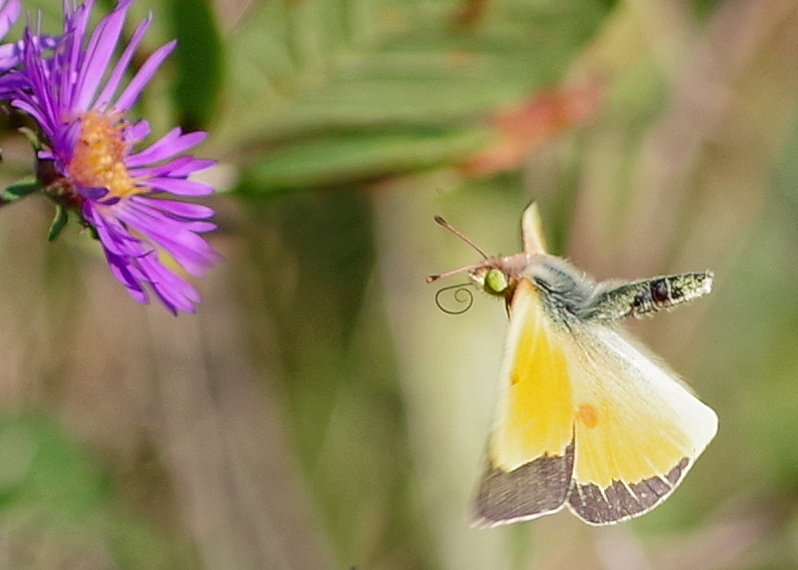
Bugs in the News XII
Greetings BugFans,
The Bugs in the News file is bursting at the seams again. Smithsonian magazine’s Daily Newsletter, the source of many of the news items in her file, is a great online resource, and the BugLady recommends that you sign up for it.
We have long known that flowers “train” their pollinators, rather than the other way around. Generations of adaptations go into a flower-pollinator “fit” like this one, and the reward for the pollinator’s hard work is being able to access a resource that no one else can (unless they cheat and tunnel into the flower’s base, of course). https://www.smithsonianmag.com/smart-news/new-madagascan-moth-species-holds-tongue-record-with-nearly-foot-long-proboscis-180978834/?utm_source=smithsoniandaily&utm_medium=email&utm_campaign=20211007-daily-responsive&spMailingID=45744650&spUserID=ODg4Mzc3MzY0MTUyS0&spJobID=2100749469&spReportId=MjEwMDc0OTQ2OQS2.
OK – the BugLady is ambivalent about this one; in fact, she once turned down an offer to appear in the same program with someone who created magnificent art pieces with dead insects. She supposes that’s a way to sneak in the back door when people aren’t insect enthusiasts, but no insect is ever harmed in the making of a BOTW.
Another argument for clean air – and another example of how, when the dominos start to fall, they build momentum: https://www.smithsonianmag.com/smart-news/air-pollution-makes-it-harder-for-insect-pollinators-to-find-flowers-180979465/?utm_source=smithsoniandaily&utm_medium=email&utm_campaign=20220126-daily-responsive&spMailingID=46307031&spUserID=ODg4Mzc3MzY0MTUyS0&spJobID=2162879922&spReportId=MjE2Mjg3OTkyMgS2.
It’s never too early to think about mosquitoes: https://www.smithsonianmag.com/blogs/national-museum-of-natural-history/2021/08/19/secret-life-worlds-most-hated-insect/?utm_source=smithsoniandaily&utm_medium=email&utm_campaign=20210819-daily-responsive&spMailingID=45486503&spUserID=ODg4Mzc3MzY0MTUyS0&spJobID=2064448016&spReportId=MjA2NDQ0ODAxNgS2.
Kleptoparasites are animals (in this case, insects) that take advantage of another insect’s hard work, robbing them of the fruits of their labor: https://whyevolutionistrue.com/2021/11/06/readers-wildlife-photos-1454/.
Getting by with a little help from Mom: https://www.nationalgeographic.com/animals/2019/02/wasp-eggs-fumigate-nests-with-gas/?cmpid=org=ngp::mc=crm-email::src=ngp::cmp=Editorial::add=Animals_20190214::rid=2030610309.
And speaking of adaptations that allow an organism to take advantage of the existing resources: https://phys.org/news/2021-11-bees-dead-meat-eating-vulture-sport.html?fbclid=IwAR3sNnjf3PbkGkp_Jvhj_3MptabVaCz6dZuIJHIWP_61_KHPLHLfGnzNJdM.
People always want to know if millipedes really have 1,000 legs. Most fall far short, but… https://www.smithsonianmag.com/smart-news/finally-a-millipede-that-actually-has-1000-legs-180979269/?utm_source=smithsoniandaily&utm_medium=email&utm_campaign=20211220-daily-responsive&spMailingID=46136420&spUserID=ODg4Mzc3MzY0MTUyS0&spJobID=2142287410&spReportId=MjE0MjI4NzQxMAS2.
And finally, a timely issue from the UW Madison Department of Entomology’s Insect Diagnostic Lab newsletter https://insectlab.russell.wisc.edu/2022/01/31/insects-on-snow/. You can subscribe to this one, too. (Go Outside – Look for Bugs!)
Feb 2 is Groundhog Day. In Wisconsin that means that if the groundhog sees its shadow, winter will last another month and a half, and if it doesn’t see its shadow, we have six more weeks until spring.
Kate Redmond, The BugLady
Bug of the Week archives:
http://uwm.edu/field-station/category/bug-of-the-week/
